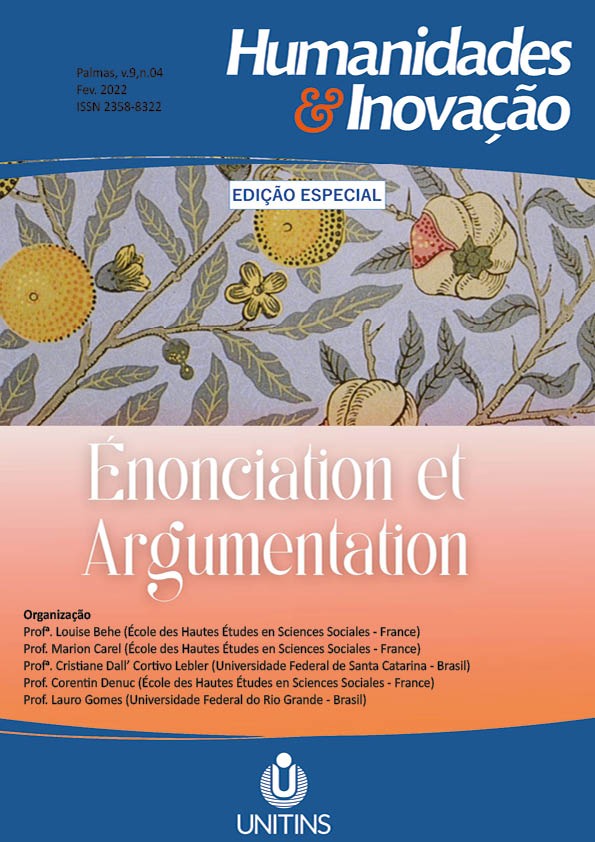O RITMO COMO INTERPRETANTE ANTROPOLÓGICO: UMA ANÁLISE DE BANGLADESH 24042013
Abstract
Neste artigo, discute-se a noção de ritmo – conforme concebida por Henri Meschonnic–como interpretante antropológico. Para fazê-lo, parte-se da problematização dessa noção mais especificamente em Critique du rythme: une anthropologiehistoriquedulangage, a partir da consideração da linguagem enquanto uma antropologia histórica. É, ainda, de interesse deste artigo refletir sobre a noção na empiricidade do discurso, através da análise do poema “Bangladesh 24042013”, de Tarso de Melo. Para isso, foram mobilizadas as noções de acento sintático e acento prosódico, elaboradas em Dessons e Meschonnic (2003) e Dessons (2011) para a língua francesa, e reconsideradas a partir das características da língua portuguesa.
References
BENVENISTE, Émile. Problemas de linguística geral I. Pontes Editores: São Paulo, 2005 [1966].
BENVENISTE, Émile. Problemas de linguística geral II. Pontes Editores: São Paulo, 2006 [1974].
BISOL, Leda (Org.). Introdução a estudos de fonologia do português brasileiro. Porto Alegre, EDIPUCRS, 1999.
DESSONS, Gérard. Lepoème. ArmandColin: Paris, 2011.
DESSONS, Gérard; MESCHONNIC, Henri. Traitédurythme– desversetdes proses. Nathan: Paris, 2003.
DESSONS, Gérard; NEUMANN, Daiane; OLIVEIRA, GiovaneF..Émile Benveniste e a arte de pensar: uma entrevista com GérardDessons. ReVEL, vol. 18, n. 34, 2020. Tradução de Daiane Neumann e Giovane F. Oliveira.
MESCHONNIC, Henri. Critique durythme– anthropologiehistoriquedulangage. ÉditionVerdier: France, 2009 [1982].
NEUMANN, Daiane. Em busca de uma poética da voz. 2016. Tese (Doutorado em Letras) - Universidade Federal do Rio Grande do Sul, Porto Alegre, 2016.
NESPOR, Marina; VOGEL, Irene. Prosodic phonology: with a new foreword. Berlim: Walter de GruyterGmbH& Co. KG, D-10785, 2007.
Copyright Notice
The submission of originals to this periodic implies in transference, by the authors, of the printed and digital copyrights/publishing rights. The copyrights for the published papers belong to the author, and the periodical owns the rights on its first publication. The authors will only be able to use the same results in other publications by a clear indication of this periodical as the one of its original publication. Due to our open access policy, it is allowed the free use of papers in the educational, scientific and non-commercial application, since the source is quoted (please, check the Creative Commons License on the footer area of this page).











